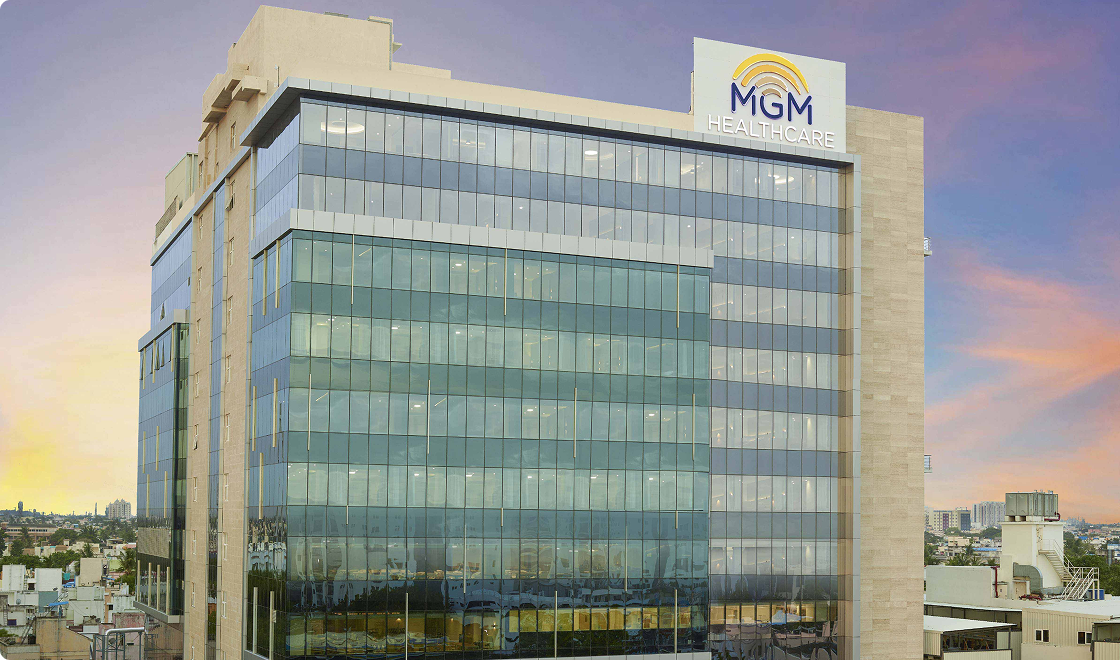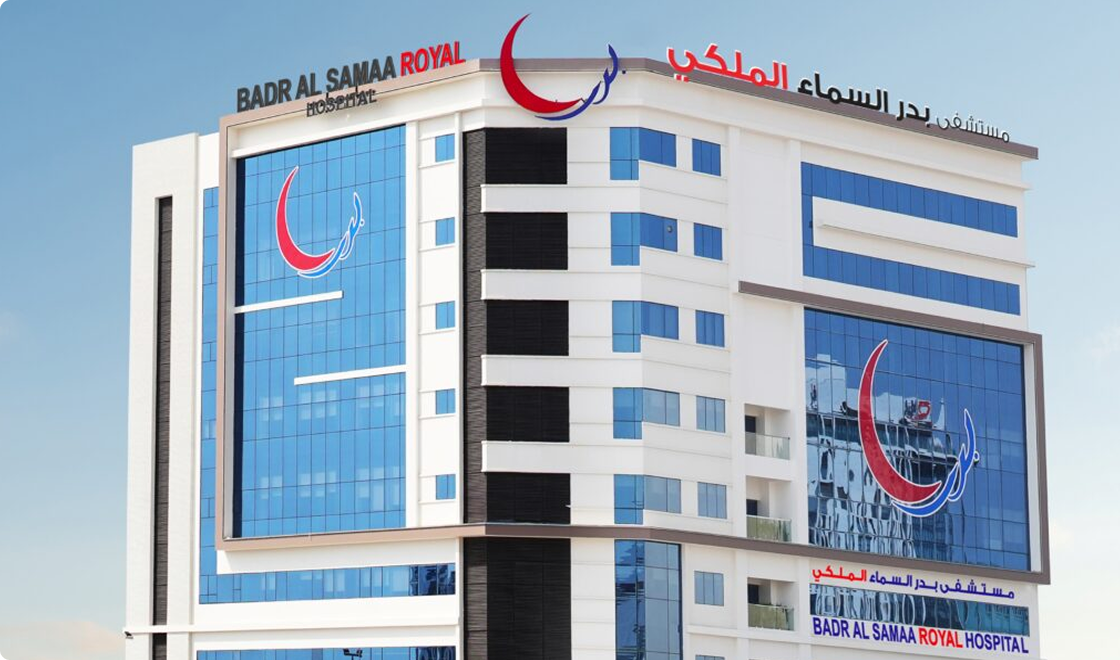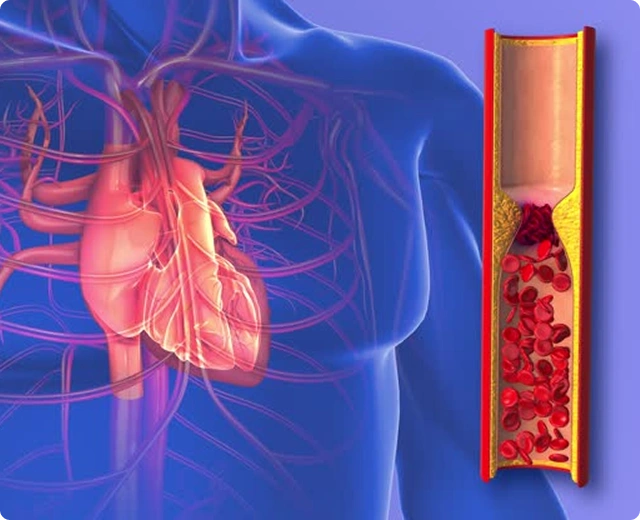
CABG Coronary Artery Bypass Grafting
Coronary artery bypass grafting treatment is a surgical operation designed to restore blood flow to the heart muscle in those who have blocked coronary arteries. CABG surgery, also known as heart bypass surgery, establishes an alternate conduit for blood to reach heart tissue, alleviating symptoms such as chest tightness and lowering the risk of heart attack. This surgery is critical for controlling advanced coronary artery disease when other therapies are ineffective.
When is CABG Needed?
CABG is considered a suitable therapy for significant heart blockage when symptoms such as these are encountered
Chest Pain

Persistent chest discomfort or pressure caused by limited blood flow from blocked coronary arteries.
Shortness of Breath

Difficulty breathing during everyday tasks, indicating a low oxygen supply to the heart.
Fatigue

Unusual fatigue induced by inadequate blood supply to the heart muscle
Heart Attack History

CABG may be required to avoid additional cardiac episodes following a first heart attack.
When comparing CABG vs angioplasty, bypass surgery is suggested for blockages, left main artery disease, or when angioplasty fails to relieve symptoms.
Types of Coronary Artery Bypass Grafting
Traditional CABG
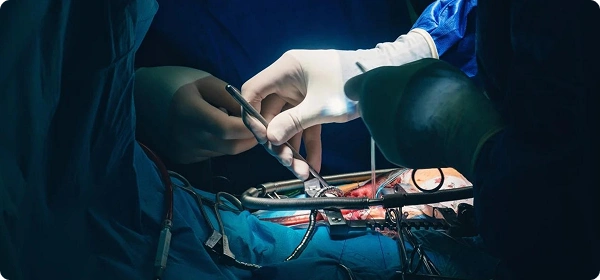
Standard open-heart surgery for blocked arteries involving chest incision and heart-lung machine support
Off-Pump CABG
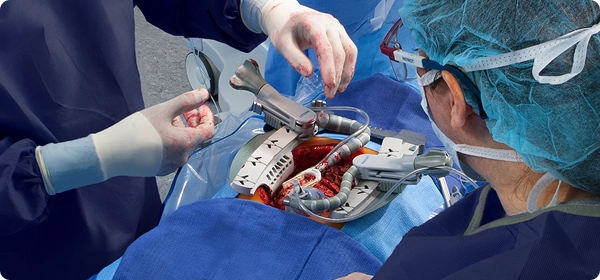
Performed on a beating heart without using a heart-lung machine.
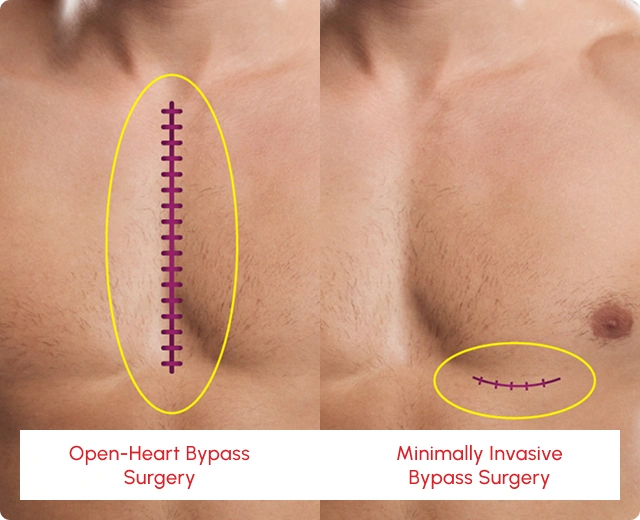
Open-Heart vs Minimally Invasive Bypass Surgery
Minimally invasive bypass surgery provides an alternative to typical open-heart procedures. This procedure involves making small chest incisions, resulting in less pain, a faster recovery, and shorter hospital stays. Open-heart CABG, on the other hand, necessitates a larger incision and heart-lung machine support, but it may be required for difficult or numerous arterial blockages, allowing the surgeon complete access and visualization.
Benefits of CABG Surgery
Heart Revascularization
Restores sufficient blood supply to the heart muscle, ensuring proper oxygenation and preventing damage from restricted coronary circulation.
Improved Blood Flow
Enhances continuous delivery of oxygen and essential nutrients to cardiac tissues, supporting optimal heart muscle performance and vitality.
Heart Attack Prevention
Significantly lowers the risk of future heart attacks by bypassing blocked coronary arteries and improving overall coronary circulation.
Long-Term Outcomes
Promotes sustained heart function, enhances patient survival rates, and contributes to better quality of life post-surgery.
Our Locations
Discover morefrequently asked questions
-
CABG is a significant surgical procedure in which the chest is opened to bypass blocked coronary arteries. It requires specific surgical techniques and post-operative care, making it more difficult than minimally invasive procedures.
-
CABG is typically conducted as open-heart surgery, which provides direct access to the heart. Depending on the position and severity of the obstruction, minimally invasive bypass surgery may be a viable option.





